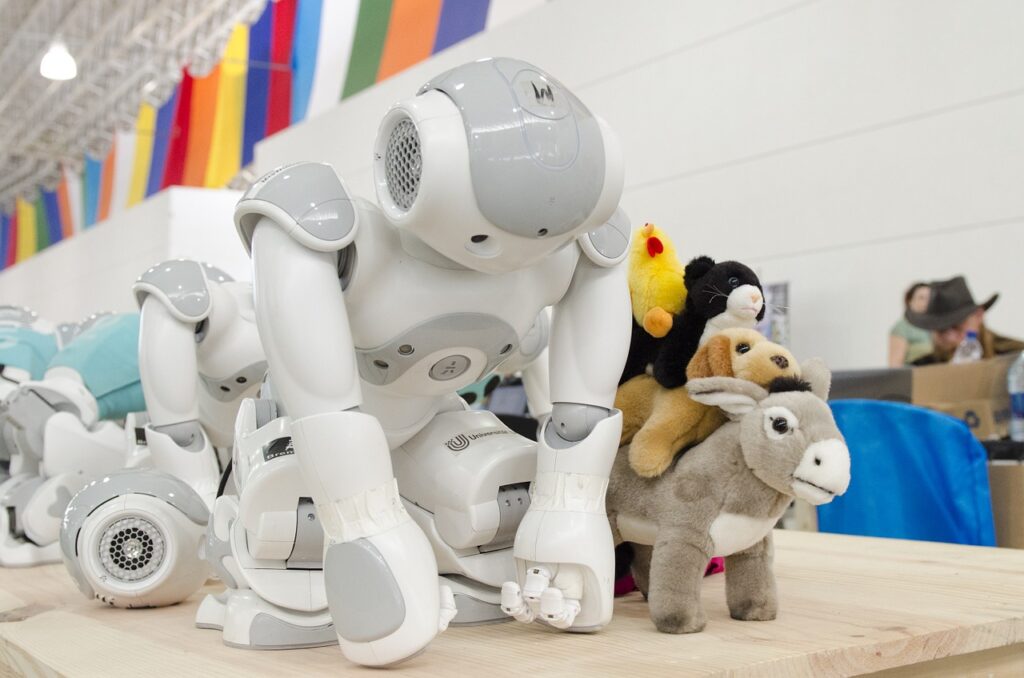The robotics industry has witnessed a significant evolution in the past few years and is expected to reach new heights in terms of innovations in the coming years. Researchers from all over the world have experimented with various materials and designs to bring flexibility and momentum to robotics. The growing number of research on robotic artificial muscle is expected to bring new opportunities for the overall industry.
What are Robotic Artificial Muscles?
Artificial muscles, also regarded as muscle-like actuators, are devices that can possess the flexibility and elasticity of natural muscle. These muscles can change stiffness, rotate, contract, and expand, with the use of external stimulants.
Artificial muscles have gained significant prominence across various industrial verticals, such as medicine, robotics, industry, etc. Artificial muscles use an electric current to allow mechanical motion, while these muscles turn various substances into energy to function.
Previous Innovations:
Various research institutes have marked impeccable innovations in the industry, which are expected to gain acknowledgment even in the coming years.
For instance, scientists at the MIT Computer Science and Artificial Intelligence Laboratory (CSAIL) and the Wyss Institute at Harvard University developed artificial muscles inspired by origami in 2017. These artificial muscles provide requisite strength and flexibility to soft robots. Moreover, the muscles enable soft robots to lift objects that are up to 1,000 times their weight using only air or water pressure. In addition, MIT recently, in July 2022, developed artificial electroluminescent muscles for tiny robots. The researchers demonstrated their remarkable miniature artificial muscles having efficient electroluminescent properties. The muscles possess the ability to tackle challenges faced by robotic systems. The muscles are developed through the layers of ultrathin elastomer, which were then rolled into a cylinder.
The John Hopkins University team has developed a mind-controlled mechanical limb that can move a single digit with little practice. It is possible that extensive artificial intelligence research focused on improving amputees’ quality of life will lead to the creation of cutting-edge devices. During the projected period, this is probably what will propel the market for artificial muscle fibers globally.
A team of engineers from Northern Arizona University earlier made headlines due to their pre-eminent ‘Cavatappi’ Robot Muscles technology that can potentially surpass human strength. The technology possesses 5 times the strength of the human muscles. This technology has significant potential in robotics and biomedical applications.
What’s Next?
Robotic brains are increasingly becoming advanced and intelligent. However, the technology is lagging behind in terms of body structure.
In order to produce artificial muscles that are stronger and more flexible than their biological counterparts, SRI International, a nonprofit scientific research organization, and colleagues from UCLA have created a novel material.
A soft material is expected to produce mechanical energy and be viable at high strain. As a result, it must not lose its shape or strength after repeated work cycles quickly. Dielectric elastomers (DE), which are lightweight materials with a high elastic energy density and have been of particular interest due to their ideal flexibility and toughness, have been a contender among the numerous materials that have been studied for the creation of artificial muscles.
Moreover, scientists are also looking for ways to make more discoveries. Another team of researchers at the Massachusetts Institute of Technology unveiled their innovation. The team launched fibers that can stretch more than 1,000 percent of their initial size. These fibers can also efficiently lift more than 650 times their weight.
In addition to that, Liberating Technologies, Inc. is making efforts to develop efficient upper limb prosthetic devices. The firm also developed VariGrip Prosthetic, which is recognized for providing support and control to the below-elbow amputees.
MXene material that has been ionically cross-linked to a synthetic polymer was used by a team of researchers from KAIST’s Creative Research Initiative Center for Functionally Antagonistic Nano-Engineering to create robotic muscle. While retaining the muscle’s strength and conductivity, the combination offers flexibility.
Researchers are continuously thriving the fulfill the unmet requirement of the end-users. According to Astute Analytica estimations, the global robotic artificial muscles market is forecast to grow CAGR of 17.4% during the forecast period from 2022 to 2030. Thus, artificial muscles are projected to have potential scope in future robotic systems as they can significantly help larger robots in mimicking the human body.

